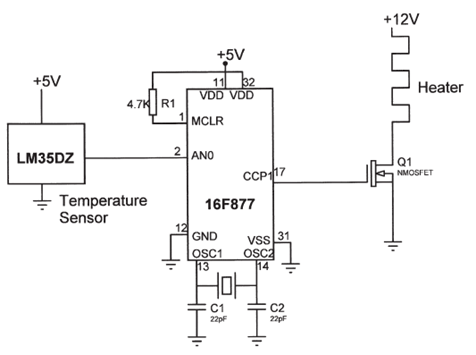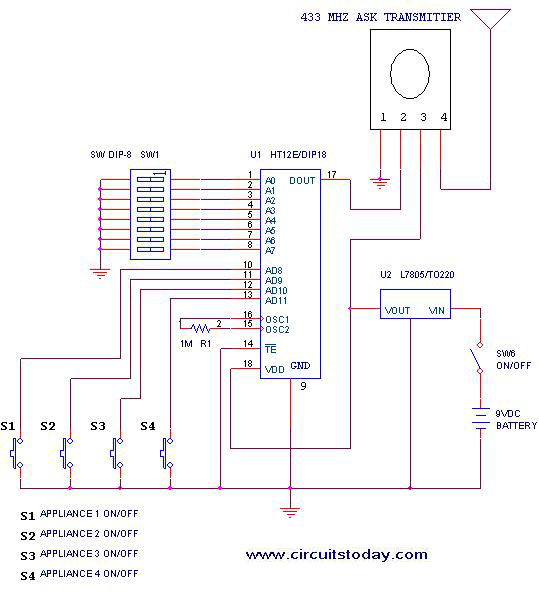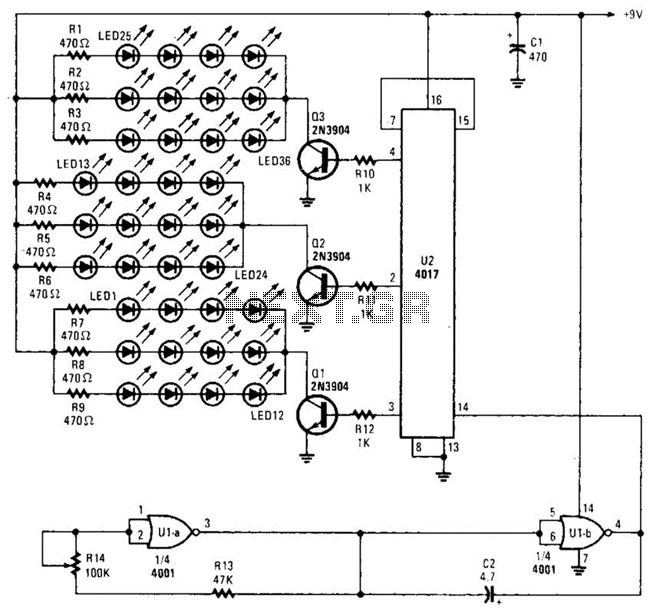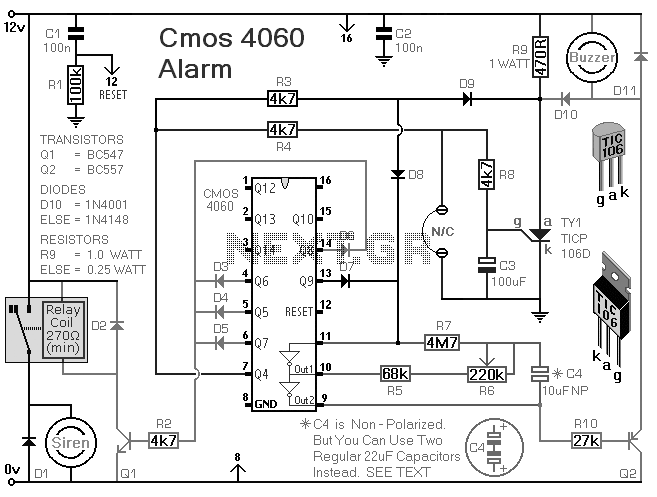
Temperature ControlCircuit using Microcontroller and Heater Driver

The electrical circuit diagram of this temperature control circuit consists of a 3-pin analog temperature sensor (LM35DZ), a built-in A/D converter microcontroller (PIC16F877), and the heater driver (IRL1004).
The temperature control circuit utilizes the LM35DZ, a precision analog temperature sensor that outputs a voltage proportional to the temperature in degrees Celsius. This sensor operates within a range of -55°C to +150°C, providing a linear output of 10 mV/°C. The analog signal from the LM35DZ is fed into the PIC16F877 microcontroller, which features an integrated 10-bit A/D converter. The microcontroller processes the analog temperature data, converting it into a digital signal for further manipulation and control logic execution.
The PIC16F877 is programmed to monitor the temperature readings and compare them against predefined thresholds. Based on this comparison, the microcontroller generates control signals to activate or deactivate the heater driver, which in this case is the IRL1004. This MOSFET driver is capable of handling high currents and voltages, making it suitable for controlling heating elements. The IRL1004 operates efficiently due to its low on-resistance, ensuring minimal power loss during operation.
The circuit is designed with appropriate power supply decoupling and filtering to ensure stable operation of the microcontroller and the sensor. Additionally, it includes necessary protection components, such as diodes, to safeguard against voltage spikes that may occur during the switching of the heater. Overall, this temperature control circuit provides a reliable and efficient solution for maintaining desired temperature levels in various applications.The electrical circuit diagram of this temperature control circuit consists 3-pin analog temperature sensor (LM35DZ), a built-in A/D converter microcontroller (PIC16F877), and the heater driver (IRL1004) 🔗 External reference
The temperature control circuit utilizes the LM35DZ, a precision analog temperature sensor that outputs a voltage proportional to the temperature in degrees Celsius. This sensor operates within a range of -55°C to +150°C, providing a linear output of 10 mV/°C. The analog signal from the LM35DZ is fed into the PIC16F877 microcontroller, which features an integrated 10-bit A/D converter. The microcontroller processes the analog temperature data, converting it into a digital signal for further manipulation and control logic execution.
The PIC16F877 is programmed to monitor the temperature readings and compare them against predefined thresholds. Based on this comparison, the microcontroller generates control signals to activate or deactivate the heater driver, which in this case is the IRL1004. This MOSFET driver is capable of handling high currents and voltages, making it suitable for controlling heating elements. The IRL1004 operates efficiently due to its low on-resistance, ensuring minimal power loss during operation.
The circuit is designed with appropriate power supply decoupling and filtering to ensure stable operation of the microcontroller and the sensor. Additionally, it includes necessary protection components, such as diodes, to safeguard against voltage spikes that may occur during the switching of the heater. Overall, this temperature control circuit provides a reliable and efficient solution for maintaining desired temperature levels in various applications.The electrical circuit diagram of this temperature control circuit consists 3-pin analog temperature sensor (LM35DZ), a built-in A/D converter microcontroller (PIC16F877), and the heater driver (IRL1004) 🔗 External reference
Warning: include(partials/cookie-banner.php): Failed to open stream: Permission denied in /var/www/html/nextgr/view-circuit.php on line 713
Warning: include(): Failed opening 'partials/cookie-banner.php' for inclusion (include_path='.:/usr/share/php') in /var/www/html/nextgr/view-circuit.php on line 713





